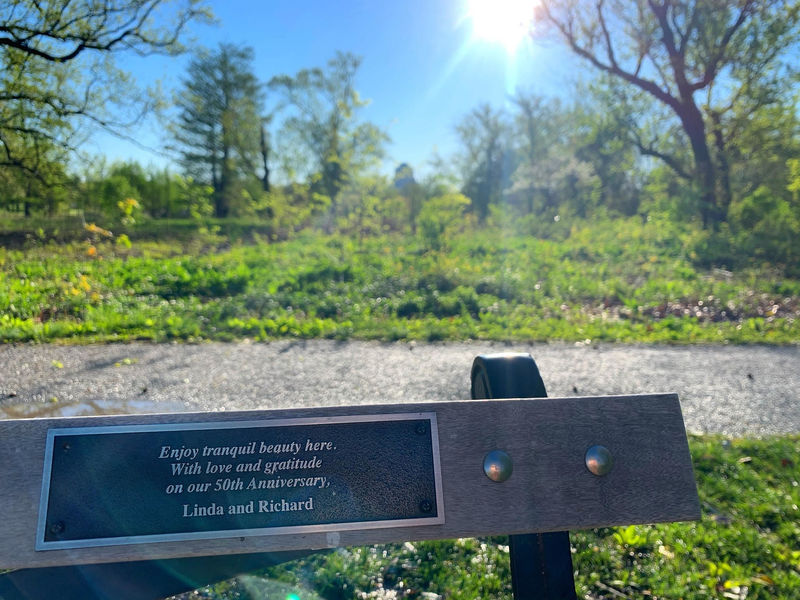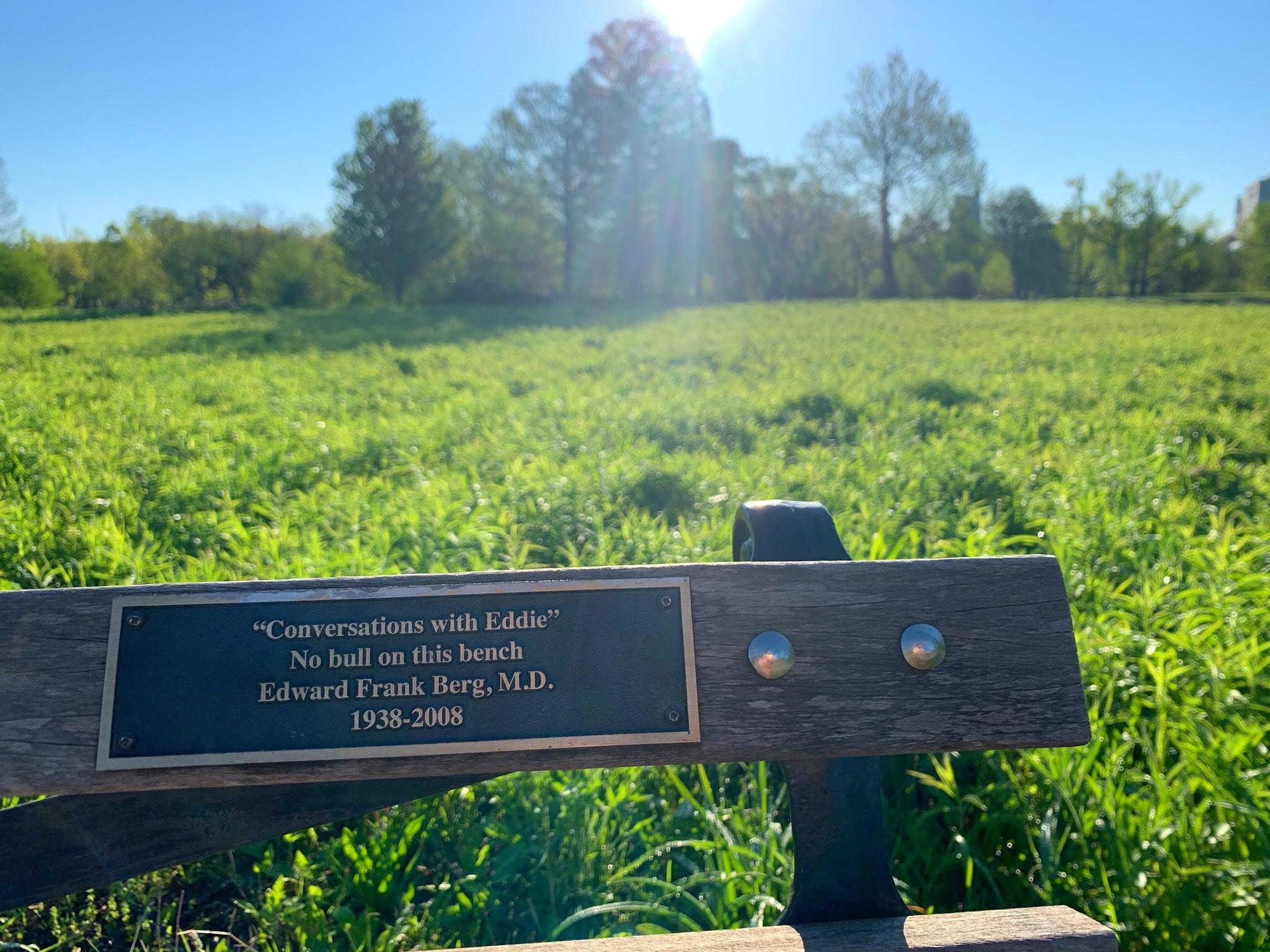 “These altars invite me again and again to become a part of this lovely creation.” Photos by Margaret Duncan ’17
“These altars invite me again and again to become a part of this lovely creation.” Photos by Margaret Duncan ’17
“Adopt the pace of Nature: Her secret is patience.” —Ralph Waldo Emerson
St. Louis, especially around the sprawling terrain of Forest Park, is a slow midwestern city. As April falls onto the 1,300 acres of the park each spring, the cold, flat land becomes a city jungle bursting with life, almost overnight. It happens quickly and it’s hard to miss — but usually, we miss it.
The park is bordered by Washington University: the undergraduate campus on one end, the medical school — where I live and study and learn — on the other. Both places are known for their research, their rankings, their productivity. Between these places of intensive thinking and doing lies the natural cathedral of Forest Park.
Woven throughout are miles of trails that tangle up with preserved wild grasses and waterways etched into the land over the decades. Century-old buildings stand as the legacy of the World’s Fair that marked the city’s peak in glory, museums and art pieces that brag of their permanence and highlight the changes that have happened here in the past 100 years.
I use the park to run. I know one trail that travels for four hard miles, another that traces a short and easy path. Still another offers good hills to burn up the energy left in my body from studying all day or feeling lost in the hospital all night. The water fountain near that lake always works. The hard pavement under those trees always causes my shins to ache in a way that is familiar and oddly comforting. The Grand Basin — an iconic and memorable body of water framed by elegant, almost other-worldly architecture — provides a convenient place to rest when I remember that I’m not a fast, or consistent, runner. This is how I use the park.
Two-person benches rest near every possible place of quiet, beauty or glory throughout the park. Each bench has an invitation: a rectangular, invariably rusted commemorative plaque. These metallic notes range from strange, small advertisements for the philanthropy of local corporations to words of political warning. The most common, though, are messages of welcome to simply be on this rickety, wooden bench at this moment in our park.
They are altars, raised most often in praise of whatever people found the most beautiful about their daily lives: love that spanned 50 years, authentic “No bull on this bench” conversations, the simple beauty of the park bursting from death into life in a warm St. Louis spring. These altars invite me again and again to become a part of this lovely creation, another creature passing in and out of the world that has been made for us.

The first benches like these that I ever noticed were on the Notre Dame campus. When I moved to St. Louis from South Bend, the sight of these Forest Park altars felt like the first full breath I had taken since graduation. The benches on campus were the places I truly prayed. One spot outside the Main Building had the best view of the glinting dome and the obscenely abundant array of Easter tulips, while still remaining hidden under the deeply rooted trees above it. A bench outside of LaFortune Student Center reminded me, as I struggled simply not to fail organic chemistry during my first South Bend winter, that “I do my best, and so I’m happy.”
I received confession on these benches that changed the way I saw God. I fell in, and out, of love on these benches (more times than I would care to admit). I sat, despondently carved out by grief. I laughed and wept with absurd joy. Who I became in college, I became on those benches.
Right now, I cannot go to church, but I still go to these homegrown, heavily worn altars as I did in college, and break my rules about what prayer is supposed to look like. This worship expands my idea of what a congregation can be — the black bird with a red seal on his chest, the 2-year-old shrieking when her dancing feet splash in the cold stream, the dogs playing on the rocks in the lumpy mud, the trees rustling in the breeze above me, as if observing it all. All this — not to mention the other human beings sitting, staring, doing absolutely nothing. There is a slowness which eases anxiety and cultivates peace. It is healing. I sit on this bench, and I pray.
During this pandemic, I go to the one church where I can still worship, because the need to praise is, for me, as fundamental as the need to breathe, as natural as the need to run wild. These altars remind me that I am part of the physical world. I am a part of this ecosystem, this congregation.
In this Easter season, where the body is resurrected, I let the trees breathe for me. I observe the birds meticulously pick their meals from the stream. I see the dogs rejoice in freezing water as they pant and pant. I sweat and run and rest in the spaces this park has offered me. I see the little girl zealously blow a wish from dandelion seeds, planting more of them unconsciously, giving life to what will nourish the bees that raise the flowers that grow around my feet beneath this small, wooden bench.
I run less now, and I sit more. The benches, the birds, and the sprouting grasses give a sermon on how to be a creature in a new, unpredictable season of both sorrows and glory. These altars of spring remind me of another sense of resurrection, one that exists not just in my mind, but in my fragile human body. In this slow and still place, I remember how to praise, even as the doors to my chapel remain closed.
On this small wooden bench, I am just another creature, like all the ones that sing with me, which God looked upon with love and found very, very good.
Margaret Duncan is a third-year medical student at Washington University in St. Louis. She can be reached at Margaret.Duncan@Wustl.edu.